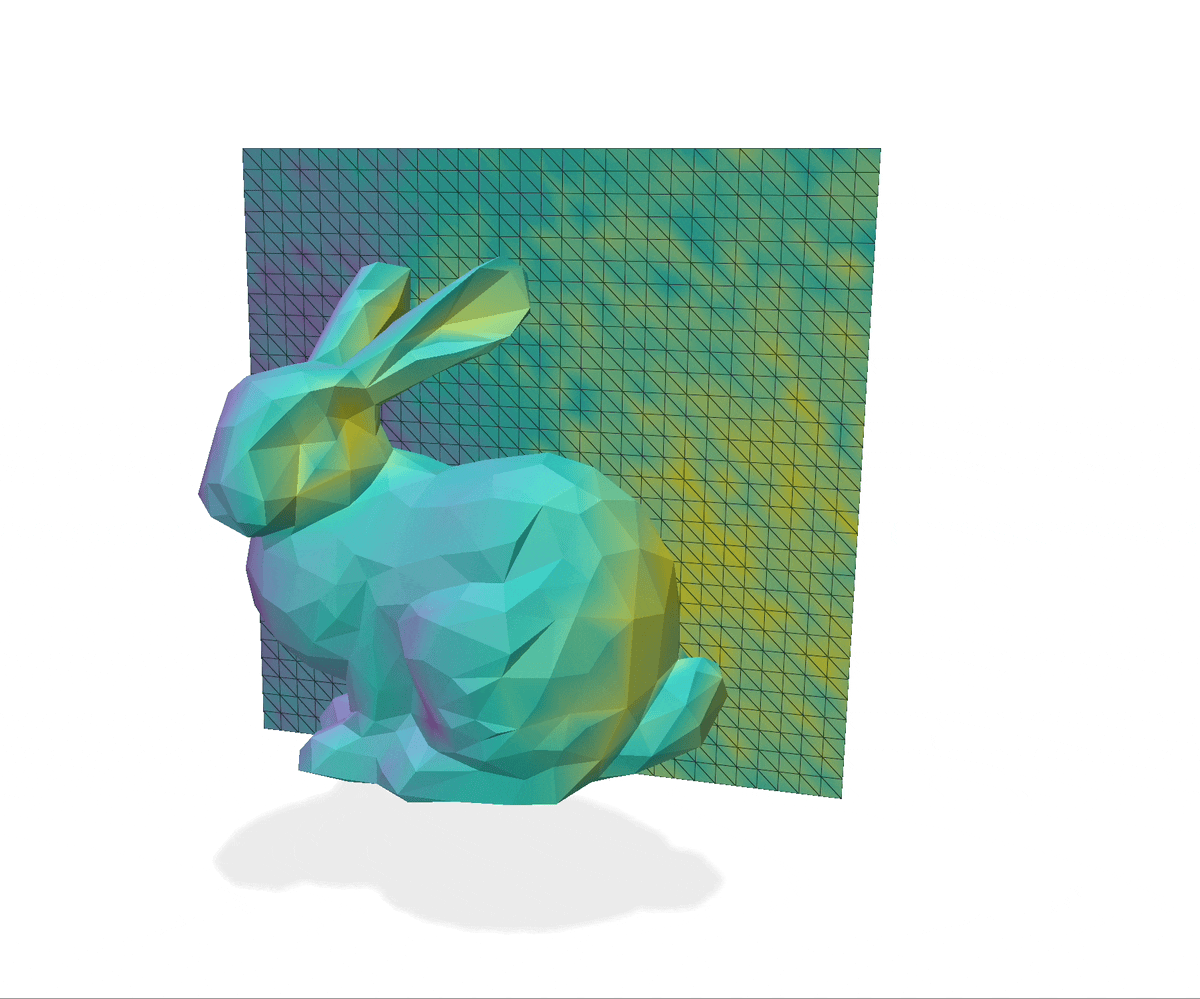Mantis is a C++ library for doing very fast distance-to-mesh queries. It implements the P2M algorithm and uses SIMD instructions to significantly accelerate query performance. Here are some of the highlights of Mantis:
-
Blazingly Fast: Mantis is about 2x faster than the original P2M implementation and ca. 4x faster than FCPW.
-
MIT Licensed: Mantis is permissively licensed under the MIT license.
-
Simple to Build: Thanks to geograms pluggable delaunay module, Mantis only consists of four files and doesn't require any external dependencies.
To build mantis you will need a C++ Compiler with C++17 support.
Mantis consists of four files mantis.h, mantis.cpp, Delaunay_psm.h, and Delaunay_psm.cpp.
You can just grab these files and add them to your build system of choice.
For convenience, you can also use the provided CMakeLists.txt. For example
to fetch and use with CMake's FetchContent:
FetchContent_Declare(
mantis
GIT_REPOSITORY https://github.com/Janos95/mantis
)
FetchContent_MakeAvailable(mantis)
target_link_libraries(my_target PRIVATE mantis)Here is a simple example of how to use mantis.
#include <mantis.h>
// you're triangle mesh
std::vector<std::array<float, 3>> points;
std::vector<std::array<uint32_t, 3>> triangles;
// build the acceleration structure
mantis::AccelerationStructure accelerator(points, triangles);
// choose a query point
std::array q = {0.f, 1.f, 2.f};
// perform the query
mantis::Result result = accelerator.calc_closest_point(q);
printf("distance to mesh is %f\n", std::sqrt(result.distance_squared));
The example folder includes two demos using Mantis. The first one demonstrates converting a triangle mesh into a signed distance field, which is useful for things like implicit modeling. In the image below you can see how mantis can be used to do a smooth union of a sphere and the Stanford bunny while achieving interactive frame rates. The distance field for the bunny is calculated on the fly for each frame.
The second one implements the walk of spheres algorithm, which is a stochastic algorithm to solve Laplace equations. In the image below you can see how mantis is used to solve the Laplace equation on a plane using the walk of spheres algorithm and using the x coordinate of the vertex normals of the bunny as a boundary condition.
These benchmarks compare the performance of mantis with the original P2M implementation and FCPW for three different meshes (which can be found in the assets folder). The test meshes are normalized to be contained in a unit bounding box and the queries are sampled uniformly at random from the bounding box [-5, 5]^3. The benchmark was run on a MacBook Pro with an M2 Max. For FCPW the SIMD width was set to 4. On top of every bar you can see the slowdown compared to mantis.
- The construction of the acceleration structure is not optimized yet, so it's pretty slow for very large meshes.
- For vertices with long interception lists, the original P2M paper suggests to implement an R-tree to speed up the query. This is not implemented in Mantis yet. This could potentially lead to a slowdown for highly symmetric shapes such as a perfect sphere.


